|
Oculus Artificialis Teledioptricus 2.0: the genre of painting - interactive computer installation |
Abstract paintings are displayed on the wall of the exhibition room, arranged similarly to exhibitions of historical collections in traditional museums. A special custom made mixed reality interface hangs in front of the paintings which acts as an intelligent video-camera. By watching the paintings through the screen of the interface, virtual three dimensional objects appear in front of them.
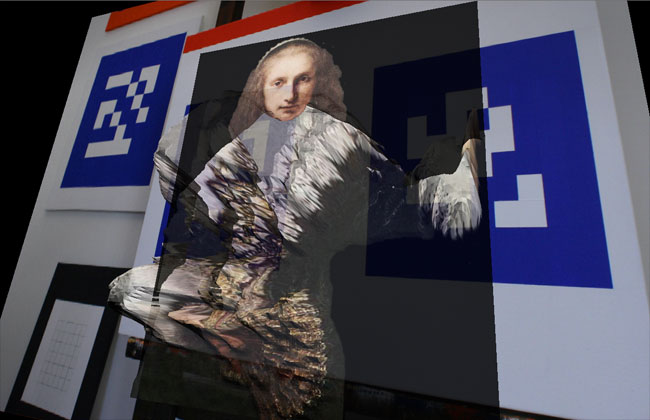
The interface functions like a window that reveals virtual worlds apparently located physically in the real space, floating in front of the paintings. The virtual worlds are animated three dimensional reliefs made after famous paintings of Rembrandt. (Portrait of Agatha Bas 1641, Portraift of a Young Scholar 1631, Supper at Emmaus 1648, Pilgrims at Emmaus 1628-29).
The statement of the installation comes from the tension between the physical reality of abstract paintings and the corresponding simulacrums made after the representational art of Rembrandt. Viewers confront with the substantial presence of nonfigurative paintings picturing binary computercodes, thus making perceptible the computer-generated figurative illusions.
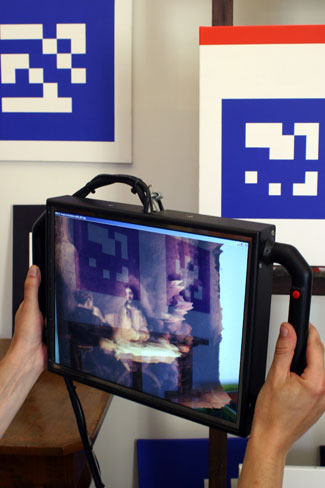 |
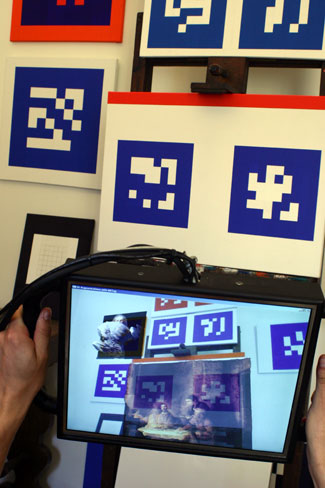 |
Technologically speaking, the installation is based on a special interface, which, through the real-time analysis of a live video image, augments the sight of the exhibition room in its physical reality with computer-generated visual elements.
The system consist of an interface containing a hand-held video camera and an LCD monitor, as well as special softwares for the analysis and visualisation. The freely movable interface, attached to the ceiling works like a videocamera with an extra-size display. Some abstract, geometric paintings are displayed on the walls, depicting binary numbers in the form of a two dimensional square-grid, comparable to to the one-dimensional bar codes we know from supermarkets.
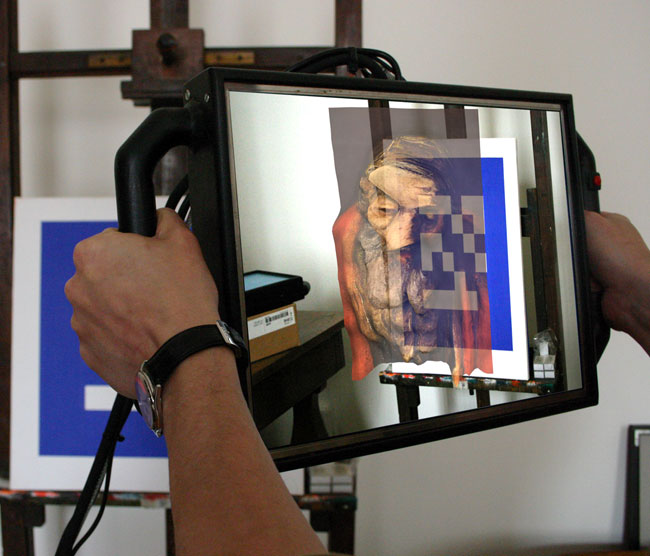
When the visitor turns the interface toward the paintings, the software recognizes the codes depicted on them, and on the basis of perspectivic distortion of the picture it can define the relative position of the display equipment in space, and mix the virtual contents hovering in front of the painting with the live video image.
Using this intelligent camera, solid three dimensional virtual objects can be passed around, floating in front of the paintings. As the animated virtual objects are augmentations of the live video image, they appear surprisingly realistic, and can be explored as free standing reliefs.
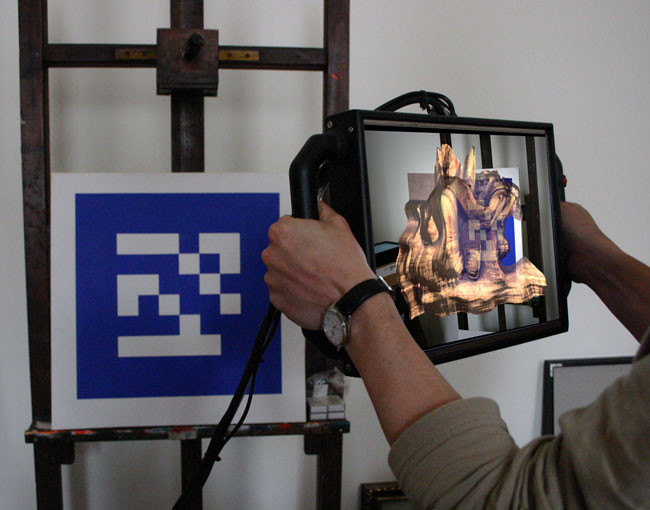
The relief-like spatial objects are made after light and shade analysis of Rembrandt's figurative paintings. The details turned in to reliefs resemble the vistas of the the original paintings only from certain viewpoints. While walking around the virtual object, the viewer gets to know those views, or perspectivic projections, which, beyond containing the associatons attached to Rembrandt's paintings in the details, also guide you in a search for the viewpoint of the meaningful original composition.